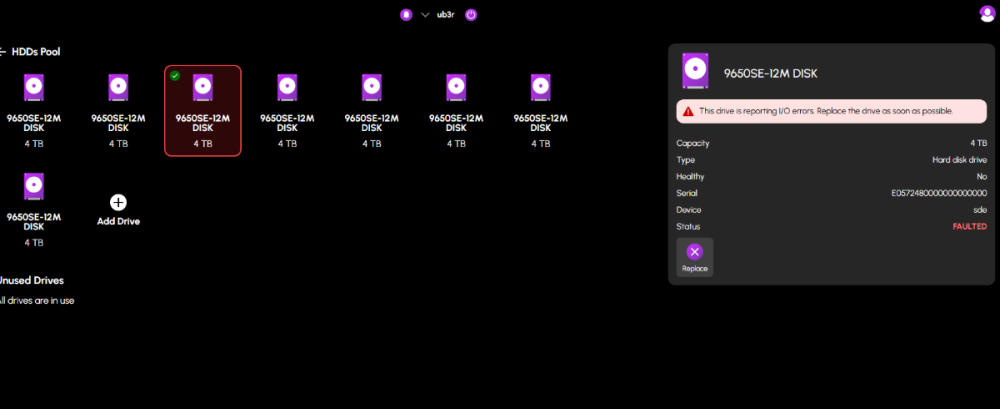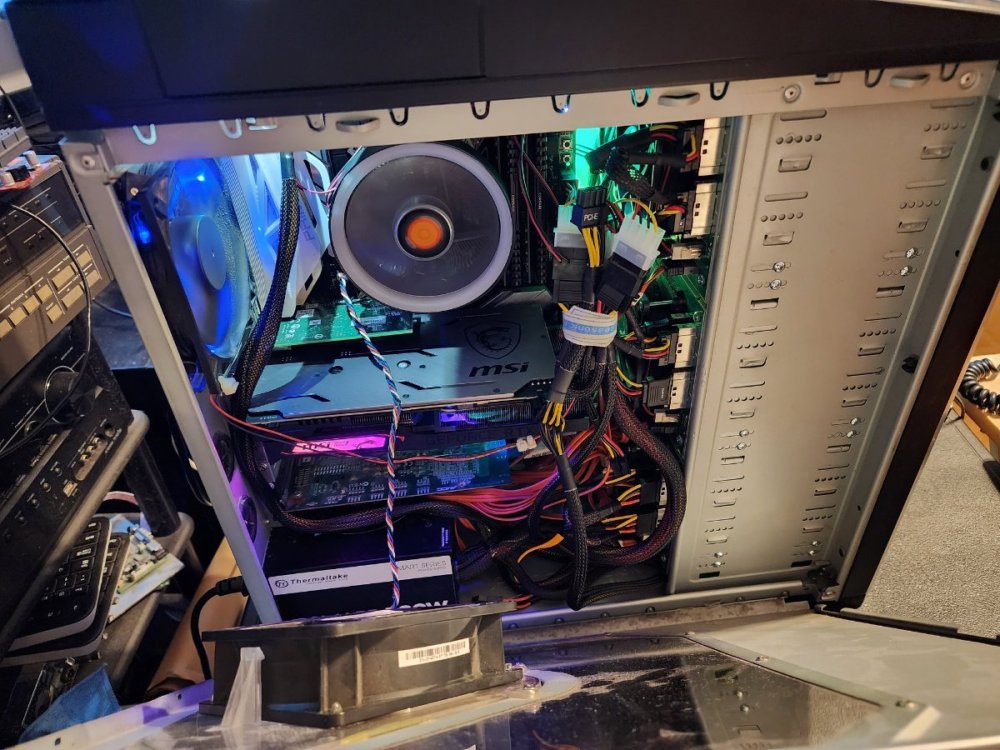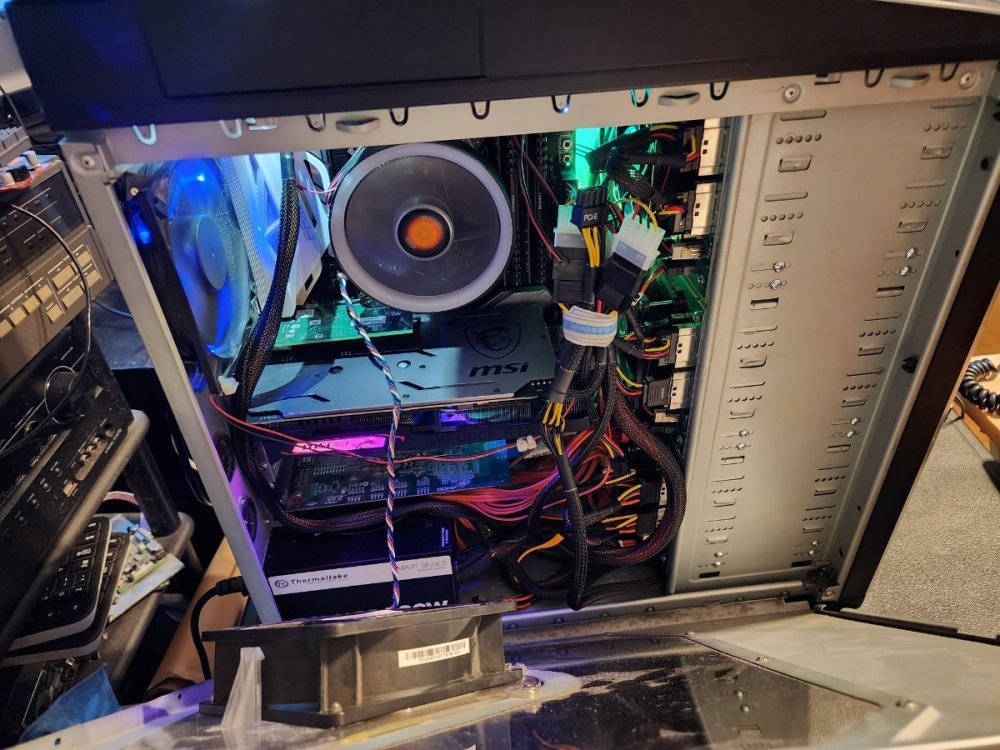-
Posts
495 -
Joined
-
Last visited
-
Days Won
10
Content Type
Profiles
Forums
Articles
Blogs
Store
Everything posted by ubergeek
-
Hold on , got to have my school girl that just won some KPOP tickets moment. Thanks @jonp for taking the dive and for everyone else that is making this a awesome community. I am along for the ride to see where HexOS take us during the road to Alpha.
-
For that I'm using a distro called Urbackup. It find on my server and pushes the backups to the hexos. Urbackup does an entire backup of a drive for my main systems plus their storage drives
-
So the 2 ways I use my nas are using Tailscale for creating a VPN and allowing me to login to the nas or keep shared folders synced to my computers. As far as sharing photos ect I am using immich paired with cloudflair " using one of my domains" and share that access out that way
-
So a bit if a update, I have been fighting this all week, I isolates the dead drive in truenas , stopped and outted the drive . allowed the system to resilver then put in a new drive to make a hot spare and everything was running smooth. The next day is when all the goofy stuff was going on with the deck so I cam home and started making back ups for truenas ect. went to bed and everything was working well. While at work the following day I started getting notifications from Up time robot telling me that the links going to my hexos was down . Logged into the deck and server not online. After some trouble shooting I had found that I no longer had tailscale access nor could i ping it from any internal computer. Got home and got into the truenas interface and rebooted the server. Once I gained UI access it showed it was trying to resilver the pool again, not thinking about I let it ride out. Well it was stuck at 18% silvering for 2 days so I started to try and delete the array and start over "just move all my data back." AND now I am at a point where im just going to rebuild the OS and all because the only access that I have is Truenas interface
-
So the stand offs I have used in the past are These , As far as front panel connections go you may have to make the adapter if there is not one made. Put it all together and it should fit in that case
-
Isn't that the point of HexOs ? Add drives and let the os create pools for you, so where the people that dont understand Truenas should be able to create a Nas without the need to learn the baseline OS ?
-
@Dylan I just have to work with ALOT of them . So in theory yes this motherboard can be put into a normal case, A few things you will have to keep in mind is there will be some needs for modifications. As in the pin headers for power on , also they make all the adapter cables to use a normal power supply. For mounting into another case it will you should get some of the motherboard standoffs to fit, as for the other mounting locations that dont fit you can make new holes or go the safer route and get the plastic motherboard standoffs " usually cheap" . If you have any questions Im glad to lend a helping hand
-
Yeah its simple but once you get into clusters and Vm management inside of that cluster it gets fun
-
I plan to order a HDHomeRun FLEX 4K to run with my setup, I just have to many irons in the fire to wanna pull the trigger to get one ATM
-
Thats in IDrac ? You might have to boot into the controller and make sure each drive is set to non raid.. If that option is not there you might be looking at needing to see if there is a firmware flash or the need of a new controller that will allow IT mode
-
Do you have each drive set to non-raid in the controller?
-
What perc card is it running?
-
Look at the guide THAT IS HERE
-
lol bad clipboard'n on my part it should be fixed now THIS LINK WORKS
-
Have you tried going into the truenas UI and erasing the drives ?
-
Why are you trying to do raid foe HExOs that does not support raid ? If you are trying to use thoes 3 drives in hexos you need to let it create the pool for you
-
That should definitely do the job and look good in the process
-
I gauged with about 70% usage
-
I use "smart plugs" Like this from Amazon to track usage. One can also use a calculator to generate costs per year. And they are really close. Like I found it would cost me 250 a year to run my 15 drive nas with a 2060 for plex usage
-
It shows the spair for pool 2 not pool 1 where the drive is dead. I suspect because the hot spair was used already from pool 1. I would love to see the option to add more drives and allow them to be assigned hot spair for X pool
-
Is there a standard way to replace a drive in HexOs yet ? I know in Truenas I can out the drive and replace it in the pool but I am unsure if there is way it should be done in Hex. Yes I know we are still in beta mode and this may not have been addressed yet but figured I would ask the question
-
For ease of replacing dead drives I typically start with sda0 and make sure they are in order . They should have proper spacing for airflow because spinning disks will create heat. A pic of my nas for reference Temps stay 28-40c
-
Check out THIS VIDEO HERE
-
FOR EVERYTHING. Ok jokes aside at work we have a 4 server cluster for a computer node "note each box is a dell R940 quad Xeon with 1tb of memory per box" also we run a 5 server cluster for ceph storage. This handles a lot of production VM's and we have a isolated sandbox for other things . We also take advantage of using Proxmox backup server "colocated" for all that we do in our DC. as far as at home I use proxmox for my remote gaming computer and home DB server, Another Proxmox server of mine is Co-located at a friends house that is being used as production and dev box.
-
To answer short Yes, HexOs could be a all in one shop for a home lab, Hex/Truenas has it advantages and draw backs like other hypervisors. So far in my testing and playing besides the limiting factors on my hardware setup I mainly use it for small Apps , Plex and Immich while using a Dell R730 for my heavy lifting VM's. I have tested both windows and linux Vm's and it performed as expected from a hypervisor. YYou can run a VPN like TailScale or if you have a domain you can use CloudFlare to access things outside of your network with out any issues " it will need setup outside of the Hexos gui ". For the Plex comment If you have older / slow hardware that would not be suitable to run as a nas and plex, it is easy to run 2 different computers to run plex and have it point back to the shares in HexOs. I have done this previously when I still was using a older Lenovo Ix2 Nas while using plex in a Hyper-V instance . For reference this is what i am using my HexOS for at the moment









